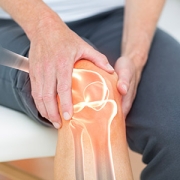The Future of Joint Replacement: How Robotics Are Transforming Hip and Knee Surgery
For decades, hip and knee replacements have helped millions of people regain mobility, reduce pain, and restore their quality of life. These procedures are some of the most commonly performed surgeries in the United States. Traditionally, these procedures relied heavily on the surgeon’s experience, anatomical estimations, and manual precision.
One of the most exciting innovations in orthopedic surgery is the integration of robotic assistance, which we pioneered in 2013. Far from replacing the surgeon, robotic assistance enhances the surgeon’s skills, offering unparalleled, computer precision and consistency in joint replacement procedures.
What Is Robotic Assisted Joint Replacement?
Robotic-assisted joint replacement involves using advanced computer technology and robotic tools to aid the surgeon in planning and executing the procedure. There are several brands of robots. The two primary ones are Mako and Cori. Each one has their own dedicated implant system.
Prior to surgery, detailed imaging—such as CT scans or digital mapping—creates a 3D model of the exact patient’s joint. This personalized map allows for meticulous preoperative planning, tailored specifically to the patient’s anatomy.
During surgery, the robotic system guides the surgeon’s instruments with sub-millimeter accuracy. The surgeon is always in control, but the robot provides real-time feedback, ensuring implants are positioned and aligned precisely.
Why Precision Matters
The success and longevity of a hip or knee replacement often depend on proper alignment and positioning of the implant. Even minor deviations can lead to uneven wear, instability, or the need for revision surgery later on. Robotic systems help minimize these risks by enhancing accuracy, leading to:
* More natural joint movement
* Faster recovery
* Reduced risk of dislocation or loosening
* Better balance and stability
* Longer-lasting implants
Benefits for Patients Undergoing these Procedures
Patients undergoing robotic-assisted, minimally invasive, muscle-sparing surgery often experience:
* Smaller incisions and less soft tissue disruption
* Less postoperative pain
* Same day surgery
* Faster rehabilitation and return to daily activities
* Improved long-term outcomes
Looking Ahead
As technology continues to evolve, robotic joint replacement is poised to become the standard of care. This is something we were on the forefront in 2013, while at the famous Hedley Institute. It blends the surgeon’s expertise with advanced tools that elevate precision and outcomes. Implant technology also continues to advance, providing greater implant longevity which reduces the need for later revision surgery.
If you are considering hip or knee replacement, exploring robotic-assisted options may be the key to restoring your mobility and returning to the lifestyle you love.
A Better Life with Minimally Invasive Joint Replacement
At Gough Surgical in Scottsdale, Dr. Brandon Gough’s expertise in minimally invasive joint replacement surgery helps patients transform their lives. From reducing pain and enhancing mobility to boosting mental wellbeing and restoring independence, the impact of this advanced surgical technique goes far beyond the operating room. With robotic-assisted precision and a focus on patient-centered care, Dr. Gough ensures that every patient receives the best possible outcome and enjoys a better quality of life.
If joint pain is holding you back from living your best life, contact Gough Surgical today to schedule a consultation and learn how minimally invasive joint replacement can help you regain your freedom.










